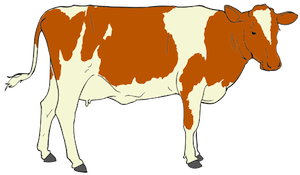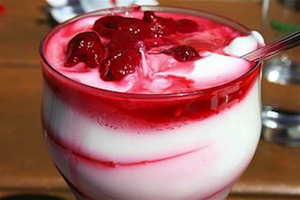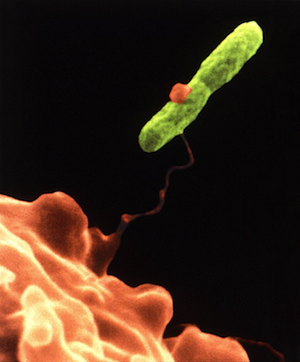Prokaryotes - Shmoop Introduction
In A Nutshell
Microorganisms (aka microbes) are everywhere around us. You can’t see them without a microscope, but that doesn’t mean they aren’t important. They’re a critical part of the "circle of life." In case you’ve forgotten it, click here. Microbes didn’t come up in the Lion King, but Mufasa probably didn’t have a microscope.
Microbes are involved in processes large and small. One microbe called cyanobacteria is responsible for transforming the earth’s atmosphere from one we had no hope of living in, without oxygen, to the oxygen-rich atmosphere we enjoy today. You probably don’t appreciate it as much as, umm, the air we breathe, but a great example of what bacteria can do for you is yogurt. It’s tasty stuff. It’s REALLY good for you. In recent studies yogurt consumption was more linked with good health than any other food. And, bacteria are required for its production.
In the picture below, microbes are necessary for the grass to grow, for the cow to digest the grass, and, finally, to turn the milk into yogurt.
The grass that the cow eats can't grow without nitrogen from soil microbes, the cow would starve if microbes didn't digest the grass in her stomach, and microbes digest the milk to make yogurt.

The cow would starve if microbes didn't digest the grass in her stomach.

Microbes digest the milk to make yogurt.

Image from here.
In this section we’re going to focus on prokaryotic microorganisms. In the Cells guide, we talked about how there are two kinds of cells: eukaryotes, which have nuclei, and prokaryotes, which don’t.
Prokaryotes are much smaller than eukaryotes. It’s no surprise that Robert Hooke saw eukaryotic cells nearly a decade before Anton von Leeuwenhoek developed lenses strong enough to see a prokaryote. Prokaryotes average about 10% the length of eukaryotic cells. If you took a eukaryotic cell and a prokaryotic cell and magnified them 10,000 times, the eukaryotic cell would be about the size of a soccer ball, and the prokaryote would be about half the size of a Ping-Pong ball. In the microscope image below, a relatively huge amoeba cell (a eukaryote) is grabbing a nice prokaryotic snack. Mmmm…prokaryote.

Prokaryotes are divided into two groups: bacteria and archaea. They look similar—like M&M’s and skittles—but they’ve actually got some important differences when you get a little further into their taste, err chemistry.
At this point, we’d like to make a little confession. We are going to focus a little more on bacteria than archaea simply because scientists know more about bacteria. Archaea have some remarkable abilities, for example, they are especially known to thrive in extreme climates such as volcanic vents and permafrost—but bacteria just do more things that affect our lives. Bacteria are responsible for many infectious diseases; archaea aren’t responsible for any. Furthermore, in the yogurt example above, all of the behaviors were performed by bacteria. We’ll touch on archaea from time to time, but if you notice we’re focusing a little more on bacteria, you’re right. And now you know why.
As a group, prokaryotes can do a lot of extraordinary things. However, each individual species is quite specialized (kind of like the X-men). An archaea cell growing in a volcanic vent would not be happy in permafrost. Similarly, each of the different actions that lead to yogurt production above are undertaken by completely different species of bacteria. In the sections ahead, we’re going to look further into the remarkable diversity of prokaryotic life.